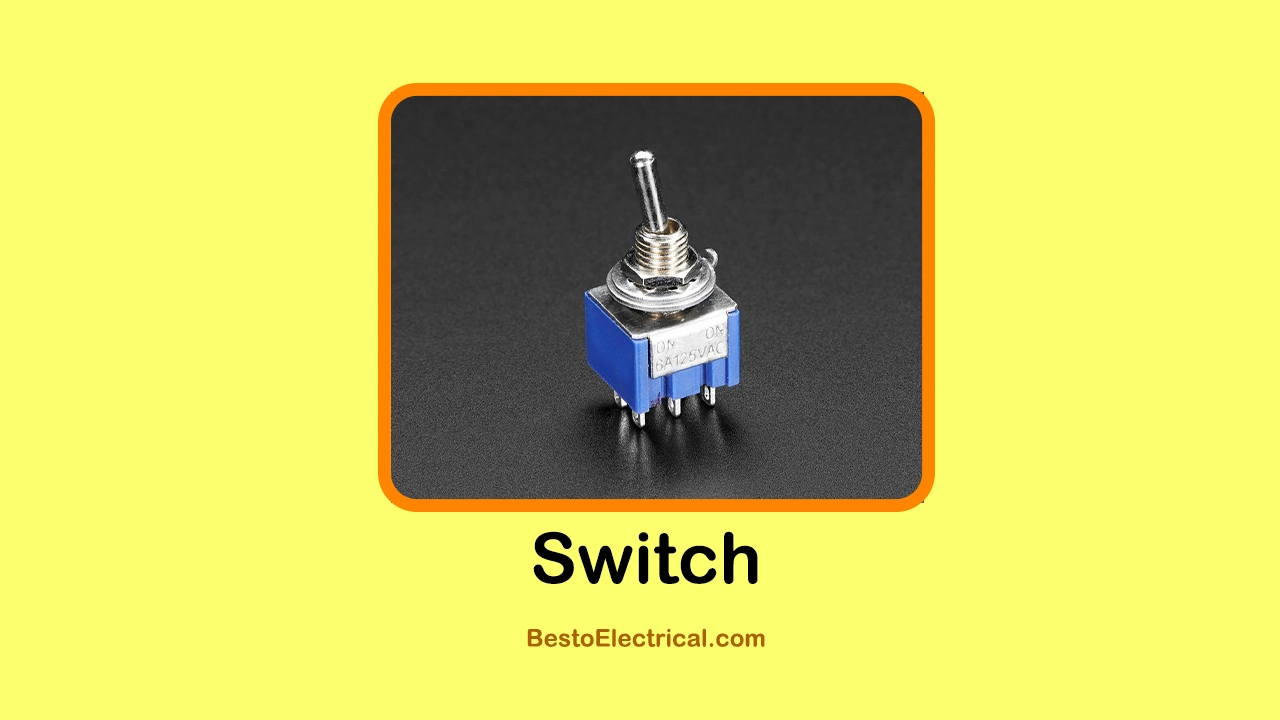What is a Switch?
Switch is a basic part of electrical and electronic systems. People Used many types of switches in daily life. It controls electricity in a circuit. switches are mainly used to either completes (turns on) or breaks (turns off) a circuit. This gives users control over the devices electricity. By flicking, pressing, or sliding a switch, users open or close the electrical path. This makes switches essential for managing power safely and efficiently.
How Does a Switch Work?
A switch works by connecting or disconnecting electrical current. When the switch is “on,” it lets current flow through, powering connected devices. When it’s “off,” it stops the current, cutting power to the devices. This simple action brings convenience and safety. Switches are most important in every electrical device, from home lights to large machines.
In market Switches come in many types, each made for a specific purpose. Different designs suit various applications and needs. Here’s an overview of the main types and their functions.
1. Toggle Switch
Use: Common in light switches and basic on/off controls.
Function: A lever is flicked up or down to open or close the circuit.
Advantage: Reliable and easy to operate.
2. Push Button Switch
Use: Ideal for doorbells, machinery, and momentary applications.
Function: Activates only while pressed; spring-loaded to return after release.
Advantage: Provides temporary control, great for single actions.
3. Rocker Switch
Use: Commonly found in appliances and car dashboards.
Function: Press one side to turn on and the other to turn off.
Advantage: Strong and easy to use. Perfect for regular use.
4. Slide Switch
Use: Compact devices like remotes and small electronics.
Function: Opens and closes the circuit by sliding a knob.
Advantage: Small, easy to integrate, and space-efficient.
5. Rotary Switch
Use: Common in equipment with multiple settings, like fan speed controls.
Function: Rotates between multiple positions to change settings.
Advantage: Allows versatile control for multi-setting devices.
6. Proximity Switch
Use: Automation and security systems.
Function: Detects objects without physical contact, often using sensors.
Advantage: Touchless control, enhancing safety and efficiency.
7. Limit Switch
Use: Industrial machinery to control and limit movement.
Function: Activates when an object reaches a certain position.
Advantage: Ensures machinery operates within safe limits.
Benefits of Using Switches
Switches offer several key advantages in electrical circuits:
1. Enhanced Safety
Switches allow safe control of electrical devices, reducing the risk of accidental shocks, shorts, and fires. Proximity and limit switches enhance safety further by enabling remote or touchless control.
2. Efficient Power Management
Switches conserve energy by letting users turn off devices when not needed. In industrial applications, switches control machinery operation, conserving power and extending equipment lifespan.
3. Convenient Control
Switches make it easy to manage electrical devices with a simple action. From turning on lights to adjusting fan speeds, they provide immediate control over appliances.
4. Versatile Design Options
Switches come in many designs to suit different applications. Options range from simple toggles to advanced rotary and proximity switches. This flexibility allows circuits to be customized for specific needs.
Practical Applications of Switches
Switches are ubiquitous across industries and applications, including:
- Household: Light switches, appliance controls, and outlets.
- Automotive: Dashboard functions, power windows, and ignition systems.
- Industrial: Machinery controls, conveyor operations, and safety interlocks.
- Electronics: Found in remote controls, handheld devices, and circuit boards.
- Automation: Proximity switches in automated doors, robotics, and security systems.
Choosing the Right Switch
Always Choosing the right types of switches depends on its function and durability. Ease of use is also important for each application. Toggle and rocker switches work well for simple on/off control. Rotary switches work well for multi-setting functions, while proximity and limit switches are best suited for automated or safety-related tasks.
Key Takeaway
“Switches enable safe, efficient, and versatile control of electrical systems.”
Switches do more than just control devices. They are vital for managing power. They improve safety and make devices easier to use. Switches are essential for smooth operation in all systems. The right switch boosts performance and safety. In any setup, a good switch makes a big difference.
Discover the Top 200 Electrical Components essential for every project, from basic resistors to advanced switches.

